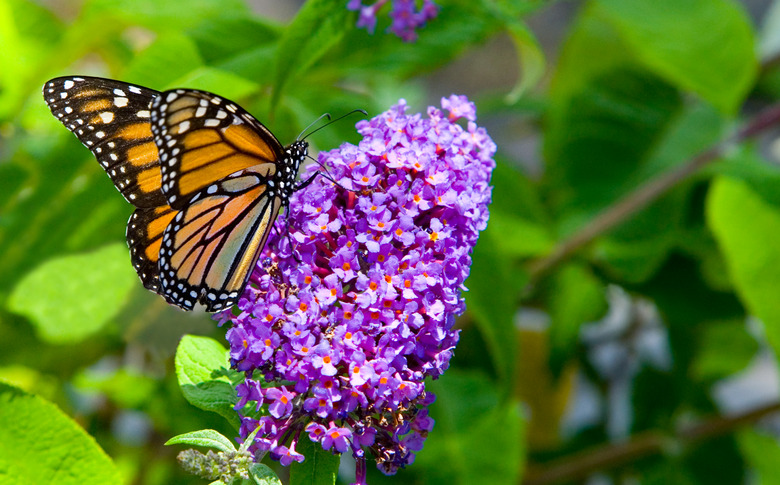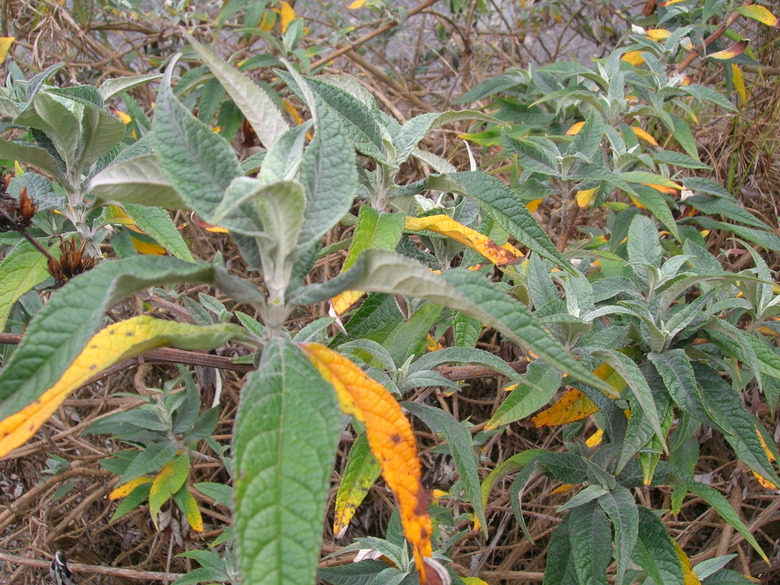Brown Spots On Butterfly Bush Leaves
You can't help but notice a butterfly bush So, especially in the spring and summer when it's crowded with colorful butterflies gleaning the extensive nectar. But beauty is skin deep with this invasive species, as the butterflies will soon discover that there are no caterpillar bushes nearby, the bushes necessary for the laying of eggs and their transformation from chrysalis to butterflies.
The butterfly bush grows best in USDA hardiness zones 5 through 9, but it's native to China. Like the monarch butterfly that miraculously navigates to Mexico during the winter, the butterfly bush navigated across Asia, Europe and across the ocean to America. Its journey took hundreds of years, and it evolved into over 140 species as it traveled, according to the Burke Museum.
Tip
Plant management includes keeping a close eye on the butterfly bush to discover any early signs of disease. And be aware that undetected diseases can easily spread to nearby plantings, extending the damage throughout the garden.
Why are the leaves on my butterfly bush turning yellow or brown?
The butterfly bush is not immune to viruses though. If its leaves are turning yellow or brown or you find spots on the butterfly bush's underside, your plant is in trouble. Bugs, rain, unclean garden tools, and people spread fungi or bacteria.
The spots range in color from yellow to brown to black. Treating a fungus on a butterfly bush is often fruitless, and it may be best to just remove the plant, bag it and dispose of it in the trash.
Prevention and Cure for Fungal Leaf Spots
Preventing spots on butterfly bush leaves begins with planting your bush in an appropriate location. The bush can reach up to 15 feet in height and needs extensive room for airflow and sun control. In the fall, dispose of dry leaves, but don't throw them on the ground or in your compost pile.
Watering the bush from the ground is also helpful in preventing spots from developing. However, if spots do develop, spray a fungicide onto the bottom of the leaves.
Downy Mildew Chokes the Leaves and the Plant
Another butterfly bush pest, downy mildew is considered a "water mold" and is the result of excessive rain or overwatering. It is harmful and can wipe out an entire crop of butterfly bushes within a week, writes Planet Natural.
Downy mildew starts with yellow spots on the shrub's leaves, which soon turn brown. The preponderance of the brown spots masks the leaves and doesn't allow the leaves to photosynthesize.
Once the leaf turns brown, it droops and falls. The leaf is choked with spores, preventing water from reaching it, and the leaf dies. With the loss of many leaves, the plant cannot survive.
Preventative Care for Fungi and Mildew
- Planting maps are important for the life of your butterfly
plants. Be sure they are well spaced for air circulation and sun.
- Deliberate pruning
also helps with air and sun control.
- The butterfly bush
should be watered weekly when the temperature reaches 85°F or more.
- In the winter, let the snow or rain
contribute the water, and if it is a dry winter, water monthly, according to Plant Addicts.
- It's
always better to water in the mornings so that the moisture has the sunlight to work its way up and into the leaves and flowers. Watering deeply and slowly is the best way to moisten your butterfly bush, and a drip system is highly recommended.

